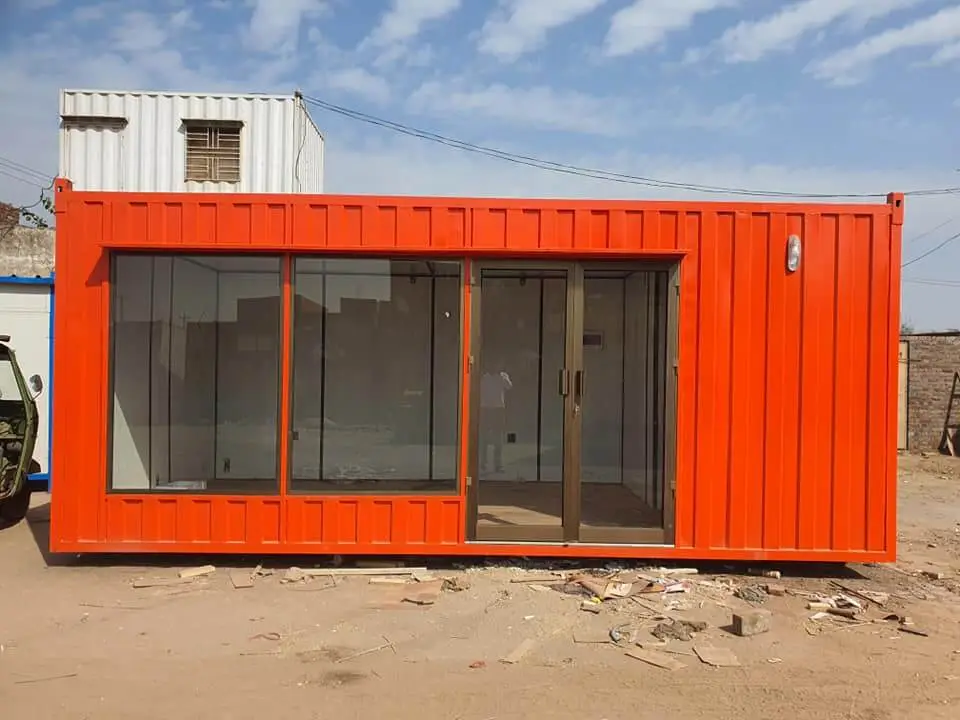In the realm of mobile and versatile living spaces, portable cabins stand as a testament to human innovation and adaptability. These structures have traversed an intriguing journey from humble tents to today’s sophisticated, multifunctional solutions.
The Beginnings From Tents to Basic Structures
Early Shelter Solutions
Humans have sought portable shelter for centuries, beginning with rudimentary tents crafted from animal skins, woven fabrics, or natural materials. These shelters served as basic protection against the elements, providing a temporary haven for nomadic tribes or explorers.
Advancements in Portability
Over time, the need for more durable and transportable structures grew. This led to the development of portable cabins in various forms, including wagon-mounted homes and simple wooden structures that could be disassembled and relocated.
Industrial Revolution and Technological Innovations
Industrial Influence on Portability
The Industrial Revolution marked a significant turning point, introducing mass production techniques that revolutionized portable housing. The assembly line allowed for quicker and more efficient construction, leading to the widespread availability of portable cabins.
Modernization and Customization
Today, portable cabins have evolved into customizable, high-quality units. They’re designed with advanced materials, offering amenities like insulation, electricity, plumbing, and various configurations to suit diverse needs.
Sustainability and Eco-Friendly Solutions
Moreover, the modern trend leans heavily towards sustainability. Many contemporary portable cabins prioritize eco-conscious materials and design, contributing to sustainable living practices. The integration of solar panels, recyclable materials, and energy-efficient features aligns with the global focus on environmental conservation.
What are the technical features of the cabin and what is it made of?
Portable cabins come with a range of technical features designed to offer convenience, durability, and functionality. Here are some common technical features and materials used in their construction:
Technical Features
Insulation
Many cabins incorporate insulation materials to regulate temperature, providing comfort in various climates.
Electrical Wiring
These units often come equipped with electrical wiring, allowing for lighting, heating, and powering electrical devices.
Plumbing
Some advanced cabins include plumbing for sinks, toilets, and showers, providing comprehensive amenities.
Windows and Ventilation
Proper ventilation through windows and vents ensures airflow and a comfortable interior environment.
Modularity
Modular design allows for easy assembly, disassembly, and transportation, enabling quick setup and relocation.
Materials Used
Steel or Aluminum Frames
Sturdy frames form the skeleton of the cabins, providing structural support and stability.
Wood or Composite Panels
Walls, floors, and roofs are often constructed using wood or composite panels for insulation and durability.
Fiberglass or Steel Doors
Entry points are made of durable materials like fiberglass or steel for security and longevity.
Roofing Materials
Roofing can consist of metal sheets, shingles, or other weather-resistant materials to protect against elements.
Impact of Portable Cabins in Contemporary Living
Versatility in Use
From temporary offices, classrooms, and accommodation units to medical facilities and disaster relief shelters, these modern solutions cater to a wide array of purposes. Their adaptability and ease of setup make them indispensable in various industries, facilitating quick and efficient responses to changing needs.
Economic Benefits and Mobility
Their cost-effectiveness and mobility play a pivotal role in industries requiring temporary structures, such as construction sites or event management. Portable cabins offer a practical solution, reducing both initial investment and long-term expenses associated with traditional brick-and-mortar construction.
FAQs
What are the primary uses of portable cabins?
Portable cabins serve as temporary offices, classrooms, accommodations, and more. Their versatility caters to diverse needs across various industries.
How have portable cabins evolved over time?
Initially basic, they’ve advanced to include modern amenities, sustainability features, and cost-effective solutions that suit contemporary needs.
What is the lifespan of a portable cabin?
The lifespan of a portable cabin varies depending on factors like construction materials, maintenance, and usage. Generally, well-maintained cabins can last anywhere from 10 to 30 years or more.
Are portable cabins customizable?
Yes, portable cabins often offer customization options. Customers can choose different sizes, layouts, colors, and additional features to suit their specific needs.
Can portable cabins withstand harsh weather conditions?
Most portable cabins are designed to withstand typical weather conditions. However, extreme weather events might require additional reinforcements or specialized construction for increased durability.
Conclusion
In conclusion, portable cabins have undergone a fascinating metamorphosis from simple shelters to sophisticated, adaptable solutions. Their evolution mirrors our quest for convenient, flexible living spaces and underscores the intersection of technology, functionality, sustainability, and economic feasibility.



